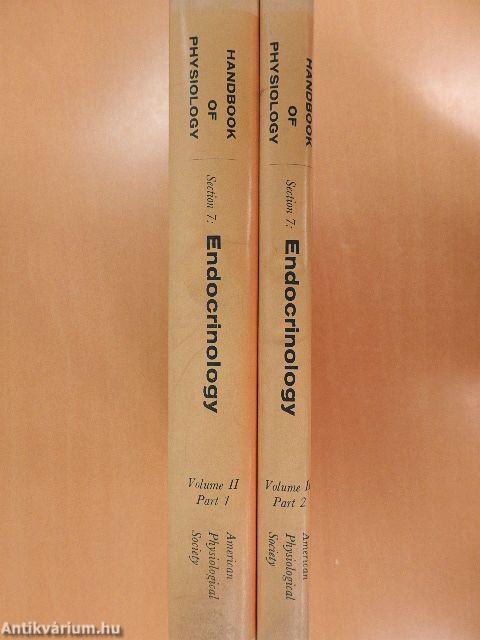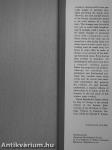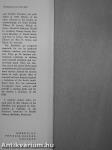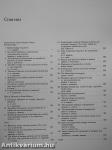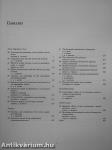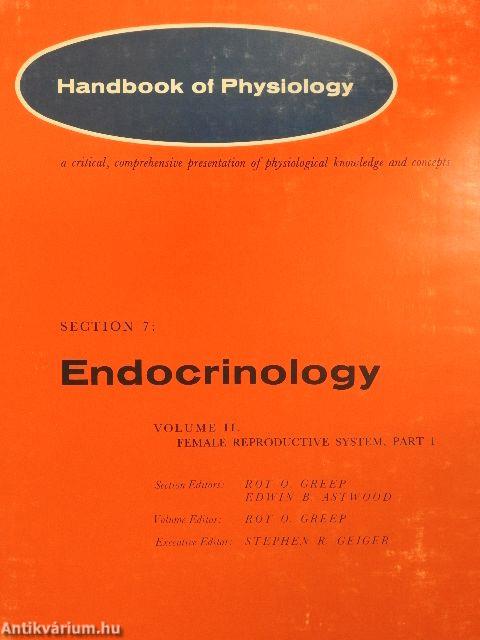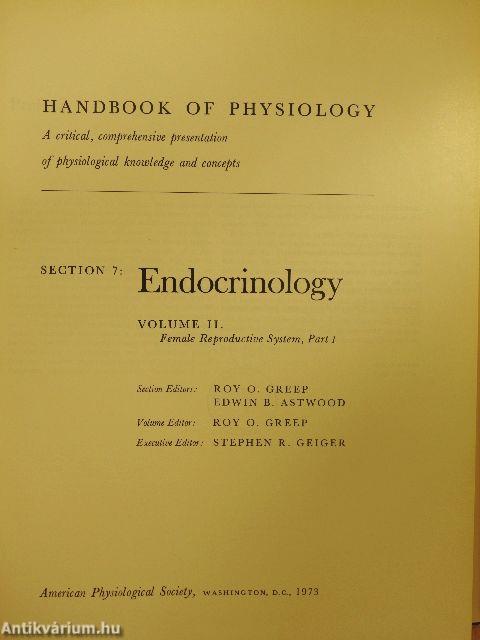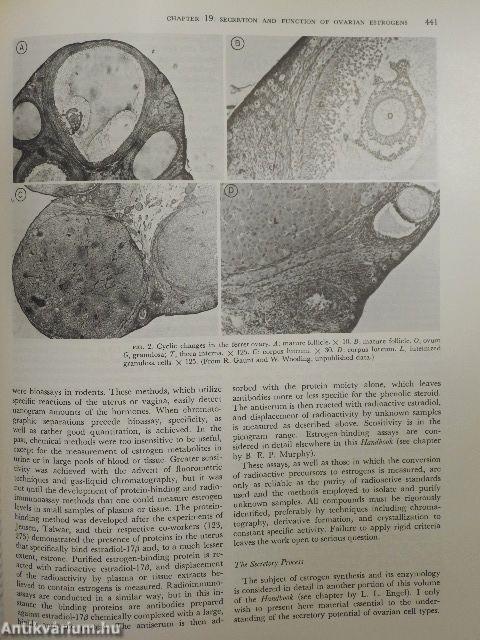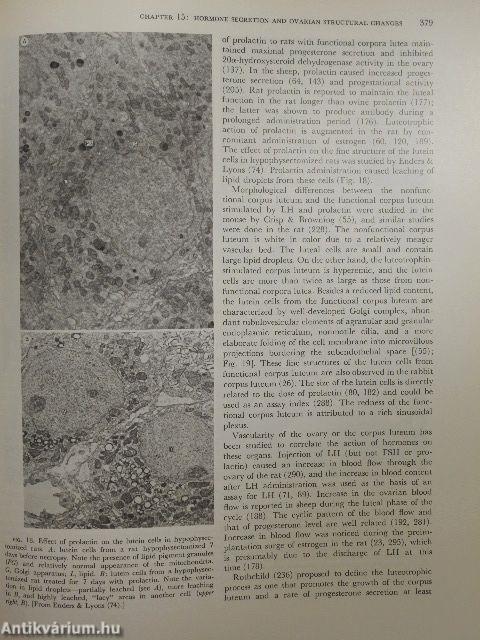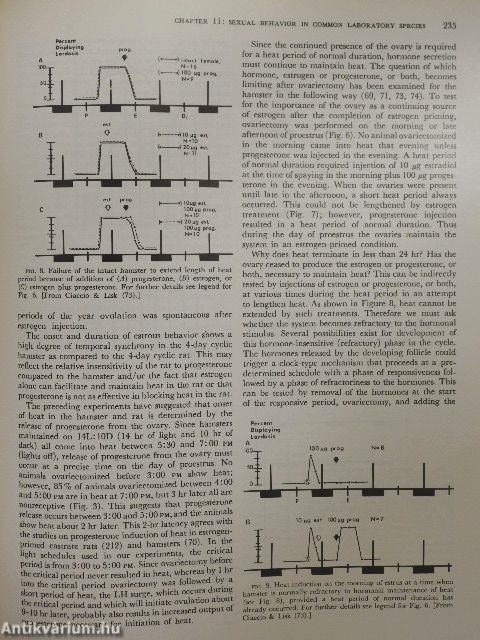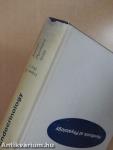1.066.816
kiadvánnyal nyújtjuk Magyarország legnagyobb antikvár könyv-kínálatát

VISSZA
A TETEJÉRE
JAVASLATOKÉszre-
vételek
Endocrinology II/1-2.
Female Reproductive System
| Kiadó: | American Physiological Society |
|---|---|
| Kiadás helye: | Washington |
| Kiadás éve: | |
| Kötés típusa: | Fűzött keménykötés |
| Oldalszám: | 1.033 oldal |
| Sorozatcím: | Handbook of Physiology |
| Kötetszám: | 7 |
| Nyelv: | Angol |
| Méret: | 29 cm x 22 cm |
| ISBN: | |
| Megjegyzés: | További kapcsolódó személyek a könyvben. Fekete-fehér fotókkal, ábrákkal. |
naponta értesítjük a beérkező friss
kiadványokról
naponta értesítjük a beérkező friss
kiadványokról
Előszó
TovábbFülszöveg
CLASSICAL PHYSIOLOGISTS havc generally sought to ascertain principles governing the steady state. However, the most notable feature of the female reproductive system is the total absence of a steady State. The changes may be subtle, but, just as small daily lengthenings of sunlight yield a season, so do subtle changes in hormonal status yield a reproductive cycle. Some events in the cycle can be traced on a day-to-day basis, but others occur at such a pace that a reading must be made every few hours or more often in order to obtain a true account of the shifting functional status. Even during long periods of gestation, the physiological indicators must show a constantly unfolding pattern before the pregnancy can progress. Although the underlying morphological and biochemical processes that manifest these cyclic events and the neural and endocrine mechanisms that generate the cyclicity are only partially understood, a massive volume of information is at hand, as the 50 chapters in... Tovább
Fülszöveg
CLASSICAL PHYSIOLOGISTS havc generally sought to ascertain principles governing the steady state. However, the most notable feature of the female reproductive system is the total absence of a steady State. The changes may be subtle, but, just as small daily lengthenings of sunlight yield a season, so do subtle changes in hormonal status yield a reproductive cycle. Some events in the cycle can be traced on a day-to-day basis, but others occur at such a pace that a reading must be made every few hours or more often in order to obtain a true account of the shifting functional status. Even during long periods of gestation, the physiological indicators must show a constantly unfolding pattern before the pregnancy can progress. Although the underlying morphological and biochemical processes that manifest these cyclic events and the neural and endocrine mechanisms that generate the cyclicity are only partially understood, a massive volume of information is at hand, as the 50 chapters in the two parts of this volume make evident.
Female Reproductive System^ edited by Roy O. Creep, is the second volume in the Section Endocrinology of the Handbook of Physiology. Volume I, Endocrine Pan-creaSy edited by Donald F. Steiner
{Continued on back flap)
Disiribuied for
American Physiological Socicty by The Williams & Wilkins Company Baltimore, Maryland 21202
{Continued from front Jlap)
and Norbert Freinkel, was published in 1972. Editors of the other volumes in the section on endocrinology are Ernst Knobil, Wilbur H. Sawyer, Monte A. Greer, David H. Solomon, Gerald D. Aurbach, George Sayers, Hermann Blaschko, A. David Smith, and Roy O. Greep. The Section Editors are Roy O. Greep and Edwin B. Astwood.
The Handbooks are prepared especially for use by graduate students, teachers, and investigators. They go far beyond conventional textbooks in dealing with involved problems and controversial issues. They are, likewise, not in the nature of the usual comprehensive and uncritical literature surveys. Instead the current status of each special field of research has been depicted against a backdrop of the firmly established facts. For the interested investigator these volumes will provide a starting point and for the teacher a summary of the field.
A separate subject index for each part of this volume of the Handbook was prepared by Constantine J. Gillespie, of the National Institutes of Health Library, Bethesda, Maryland.
AMERICAN PHYSIOLOGICAL SOCIETY
L .
i
' iv
I I.
^'Jixifl '/ ' /
, . I , i
' 'u n. ' ' ' 1'' 'iJ Vissza
Témakörök
- Orvostudomány > Élettan
- Idegennyelv > Idegennyelvű könyvek > Angol > Orvostudomány
- Orvostudomány > Általános orvosi, egyéb > Idegennyelvű
- Orvostudomány > Általános orvosi, egyéb > Kézikönyvek, enciklopédiák
- Orvostudomány > Általános orvosi, egyéb > Kutatások, kísérletek
- Orvostudomány > Belgyógyászat > Általános > Idegennyelvű
- Orvostudomány > Belgyógyászat > Általános > Kézikönyv
- Orvostudomány > Belgyógyászat > Általános > Betegségek > Egyéb
- Orvostudomány > Orvosi idegennyelvű könyvek > Általános orvosi
- Orvostudomány > Orvosi idegennyelvű könyvek > Belgyógyászat
- Orvostudomány > Orvosi idegennyelvű könyvek > Élettan
- Orvostudomány > Általános orvosi, egyéb > Betegségek > Egyéb



